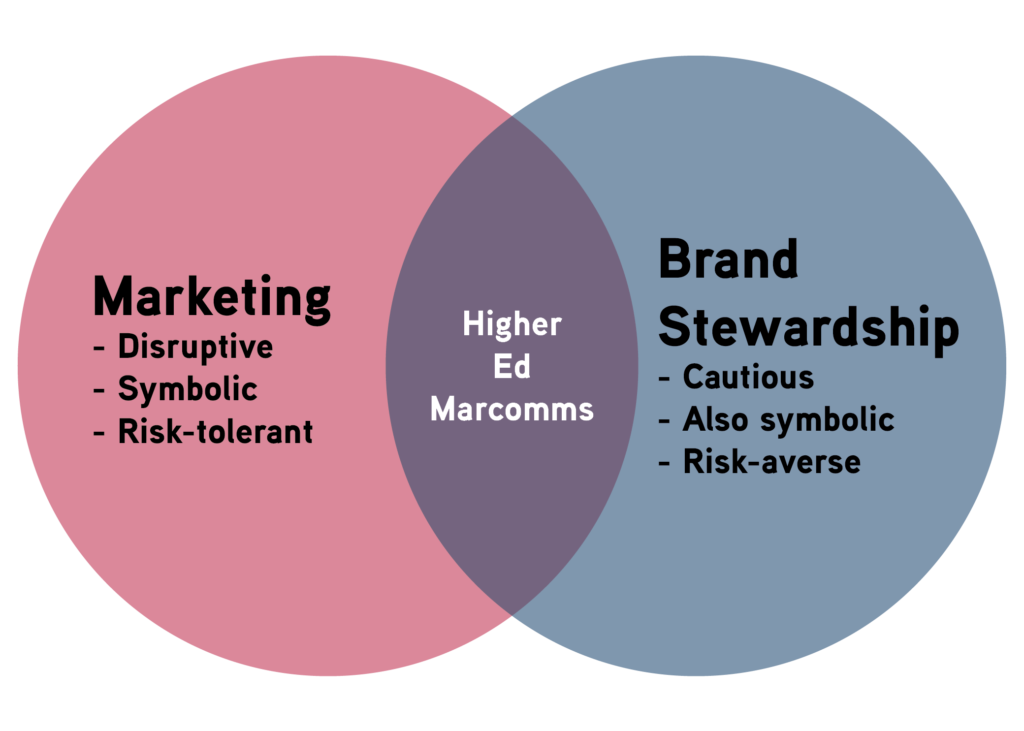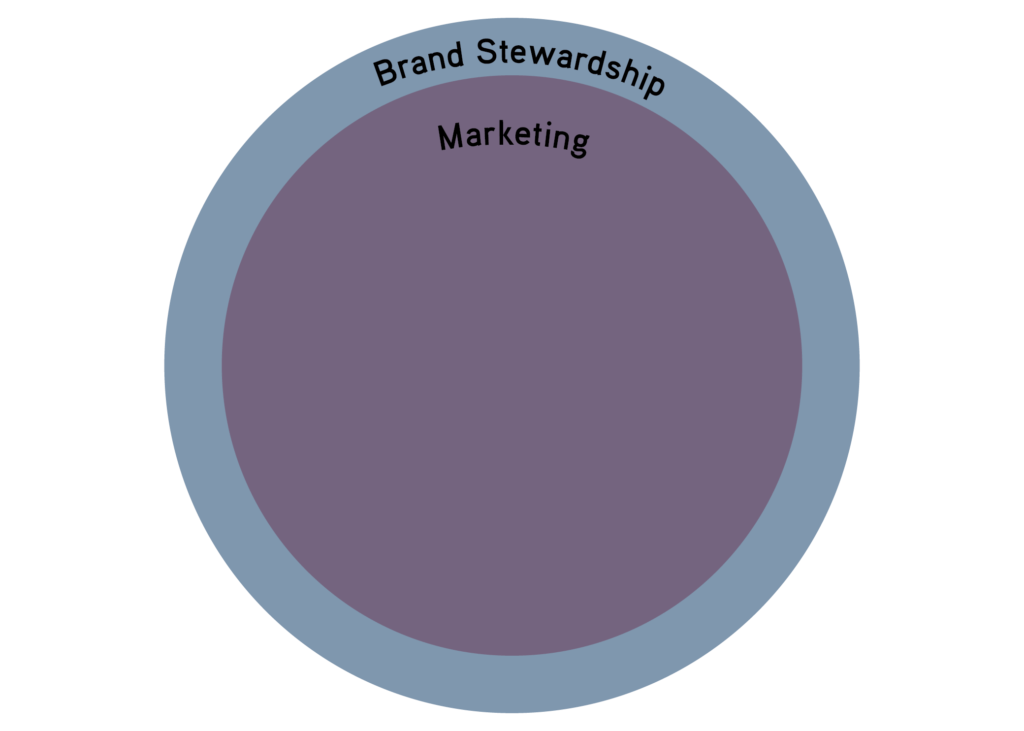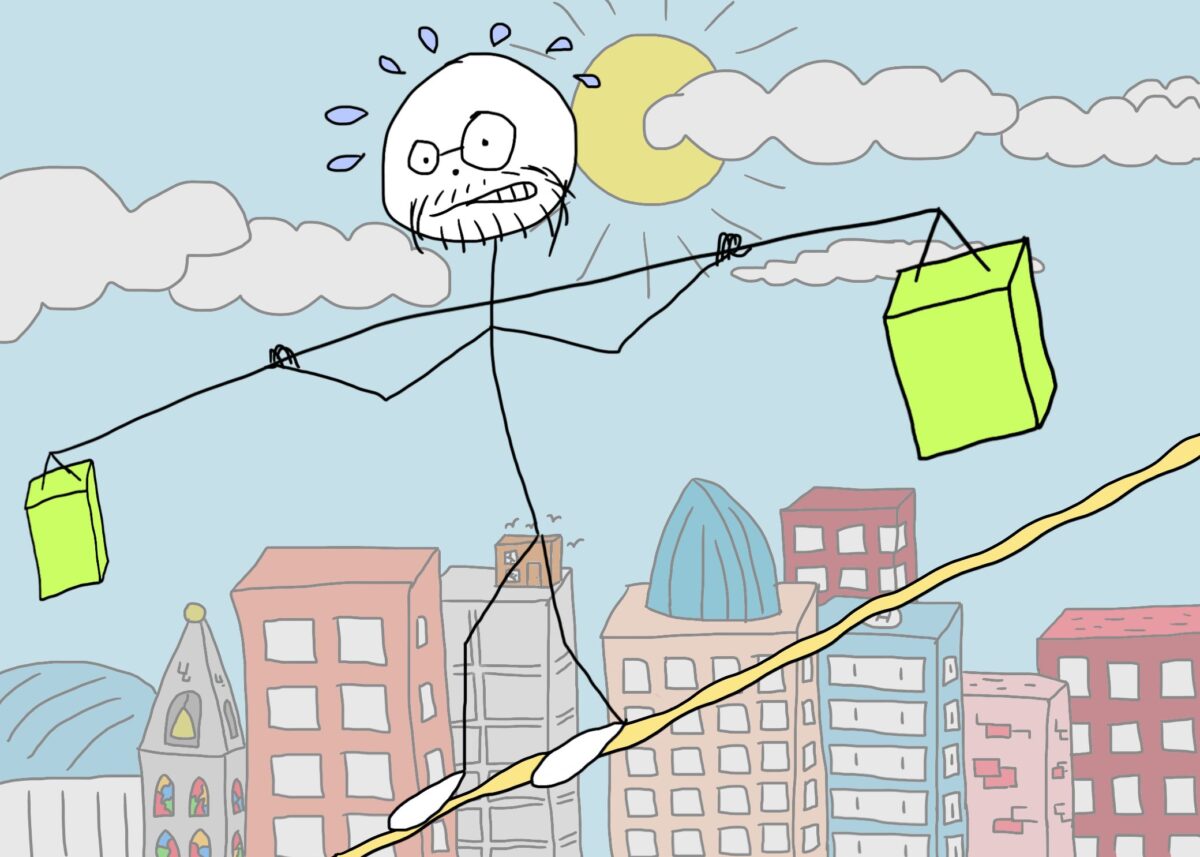Something I think about a lot is the fact that higher education marketing exists in a space between two overlapping and seemingly contradictory sets of needs. It’s a tightrope (which is admittedly an overly dramatic image; it’s more like a line on the ground, but that’s no fun to draw). You’re balancing two things: marketing, and brand stewardship, which exist in tension with each other in some important ways.

Thing 1: it’s marketing.
Marketing is inherently disruptive. There are as many ways to describe marketing as there are grains of sand on a beach. One of them is that it’s about making sure the right people know the right things at the right time.
That means you have to get the right people’s attention at the right time.
1a: Content with stopping power
Standing out means doing things that aren’t expected. To break expectations and halt somebody mid-Instagram scroll to force them to take notice.
That’s inherently risky. Because when something is new, it’s different. And when something is different, it requires interpretation. Interpretation means you’re inviting gaps in understanding, and the gaps are where the danger is.
1b: Simplifying the complex
It also means condensing things. I can write 10,000 words about how our school is the best school, in excruciating and accurate detail. I can’t drop that on Facebook and compete with a cute puppy or political outrage for stopping power. What’s the one thing people must know? How do I express it with as much impact as possible?
So you need to condense. Condensing moves you from the thing to a symbol of a thing… and we’re back to interpretation, and the hazard that people won’t interpret things in the spirit you intended them.
Thing 2: it’s brand stewardship.
This is inherently opposite to marketing. You need small-c conservative, hundred-year thinking. Ensure that you’re taking as few risks as possible that may damage your brand in the eye of your stakeholders.
I articulated this a bit in the risk ladder note a few weeks ago. But while the brand ladder shows where risk resides and where it should be tolerated, it doesn’t really capture the fact that the whole ladder lives in dynamic tension from rung to rung.
Brand stewardship overlaps marketing
The obligation to safeguard the brand actually has primacy over the marketing mission. So while the initial Venn diagram has marketing and brand stewardship overlapping, the marketing thought actually more accurately happens inside the brand stewardship circle:

Getting back to the ladder metaphor, brand stewardship tilts the ladder downward, if not lying it down flat. The appetite for risk to achieve the best possible marketing is subsumed by the need for caution in the brand space.
There’s some flex here — imagine the external circle growing and shrinking according to the mandate. A newer institution, without the benefit (and weight) of a lot of venerable history behind it, can take more risks. A new program at a venerable institution is in a middle ground where the program hasn’t accrued an identity that needs to be maintained, but it still exists in that larger context.
So what initially seems like an overlapping Venn diagram is really a contained one. It grows, it shrinks, and in vanishingly rare circumstances the “marketing” circle might eclipse the brand stewardship one.
Interestingly, and something I don’t quite have the brainwidth to unpack right now: both are really about symbols. Marketing reduces complex sets of information to compact communication units, moving them closer and closer to symbolism. Brand stewardship is about ensuring the smallest unit of information: a logo, a name — carries as much power and weight as a symbol possibly can. So one need drives you to symbolism. The other need is about preserving and adding value to an existing symbol. Hmm.
Obviously, this is not impossible to reconcile. It’s actually kind of fun to work through these challenges. This is where having a strategy is key. You need to figure out the marketing who/what/when/how, but you also need to figure in a creative approach that is disruptive inside a larger brand context.
It’s a tightrope, but people walk tightropes. They do it because it’s challenging, and fun. When you pull it off you’re doing something kind of amazing and dazzling the crowd. You get on the tightrope because you want that challenge. And while it’s scary while you’re walking it, it’s profoundly rewarding every time you get to the other side.
March 21, 2021
Soundtrack:
Bell Orchestre, “House Music”
The Kinks: “The Kinks Are the Village Green Preservation Society”
Kruder & Dorfmeister, “The K&D Sessions”
